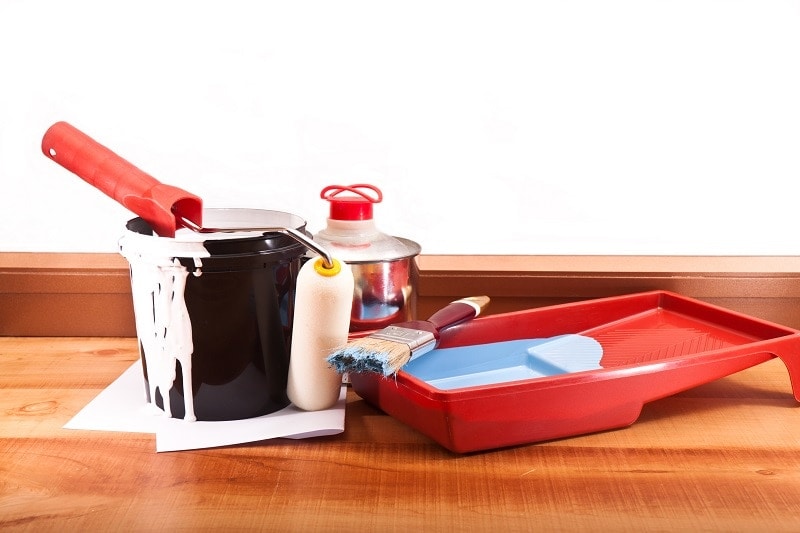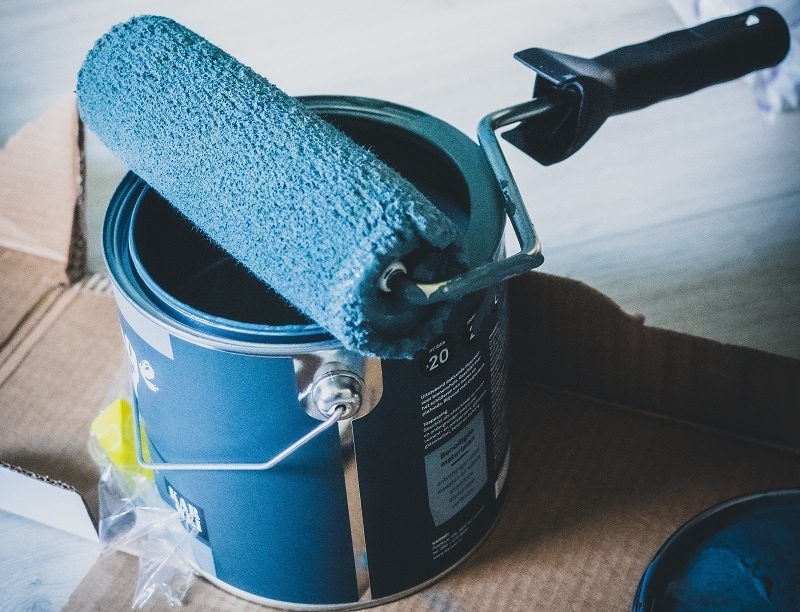How to Safely Dispose of Paint Thinner
-
- Last updated:


Nothing can brighten or transform a room than a fresh coat of paint. It can hide years of abuse and stains with the pass of a brush. Many Americans have taken on the task, purchasing over 300 million gallons of paint in 2019. The amount of waste is over 750 million gallons if you include all segments using these products. The problem is what to do with any paint you have leftover.
We can’t deny how well oil-based paints look. You can cover a space in one coat and get a durable finish. If you want to redo your bathroom, these products offer the best coverage that will last. The problem isn’t the paint as much as it is the solvent you must use to dilute it and clean up afterward. Using paint thinner poses some challenges for DIYers because you can’t just spill it down the drain.

Before You Start

The essential thing to understand about paint thinner is that it’s hazardous waste. Not only is it toxic to humans and the environment, but it’s also combustible. The reason is that it contains volatile organic compounds (VOCs). These are the chemicals that give this solvent its characteristic smell. You know someone has been painting as soon as you walk into a room with a fresh coat.
Unfortunately, paint thinner has a low flashpoint of just over 100℉ when it can catch fire. That’s something to bear in mind when you handle it for disposal. But wait! There’s more! A look at the material safety data sheet (MSDS) for a common product is enough to send shivers down your spine. The warnings include hazards such as:
- Eye irritation
- Nausea
- Dizziness
- Liver damage
- Neurological damage
We recommend that you contact your city hall before going any further to find out about any specific regulations regarding hazardous waste. Some municipalities have special collection days for these types of materials that can save you a lot of time and effort.

Safety Precautions
Before you begin disposing of your leftover paint thinner, let’s review what precautions you should take to avoid the hazards, as mentioned earlier. The first thing on our list is adequate ventilation. It even says as much on the can. That’ll help you avoid the issues with inhalation. We strongly urge you to wear both Impermeable gloves and safety glasses, too. It’s a small price to pay for playing it safe.
1. Get the Smallest Size Container Before You Start Your Project

The best way to dispose of paint thinner is to only the amount that you’ll need. It’ll save you a lot of hassle in the long run. This product isn’t expensive, so it’s not going to break the bank if you end up needing to buy more. Remember that paint thinner does an excellent job of cleaning, so a little goes a long way.
2. Pour Some Paint Thinner in a Metal Container to Clean Your Brushes
It’s imperative not to use glass, given paint thinner’s volatile nature. Place your brushes in the liquid, making sure the bristles are completely immersed. Then, let the solvent get busy and do its job. Let the brushes sit in the container for at least one hour or preferably overnight. That will help to ensure that they get cleaned properly. After all, brushes are expensive if you have to replace them every time.
3. Pour Off the Excess into Another Clean Container
The great thing about paint thinner is that you can reuse it. Artists who use oil paints do that all the time. The leftover paint on your brushes will sink to the bottom because it is heavier than the solvent. The rest of the liquid will remain clear.
Carefully remove your brushes to avoid stirring up the dredges. Then, pour the clean portion into another clean, metal container or the original one. Voilà! You have some saved paint thinner for your next project or touch-up work on your current one.
4. Leave the Residue Out to Dry

The paint left in the bottom of the can will dry out—eventually. In the meantime, leave it in a well-ventilated room or space like your garage. Just make sure it’s out of reach for pets and small children. Bear in mind that it can take some time before it becomes completely dry. It depends on the amount of paint. What happens next depends on how much is left in the container.
5. Prepare the Container for the Trash
Local and state regulations may vary. However, generally speaking, if there’s less than an inch of sludge, you can toss it in your household trash. You can put your cleaning rags in the container, too. You can hurry things along by adding kitty litter to the leftovers. Make sure it’s dry before you proceed. Close the lid, and throw it away. If there’s more paint thinner left, you need to switch gears to the alternative method.
5a. Take the Leftover Paint to a Hazardous Waste Collection Center
Some cities and states have special waste programs to handle hazardous materials like paint thinner. The US Environmental Protection Agency (EPA) lists available options with links to each site. Be sure to read about any other prep you need to do before disposal.

Final Thoughts About Paint Thinner Disposal
While regulations will change the paint industry, oil-based paints still have a place in commercial and residential venues. If getting rid of your excess paint thinner is too much of a hassle, you might want to consider opting to use mineral spirits instead. You’ll find odorless products available that can make your job less unpleasant. The essential thing is to treat either one for what it is, hazardous waste.
Featured Image Credit: TaurusY, Shutterstock
Contents

